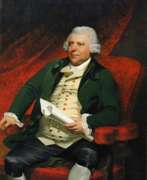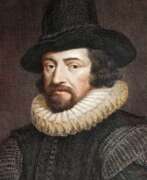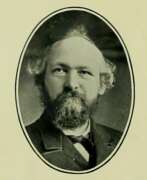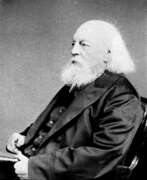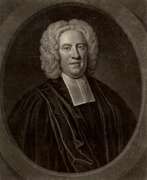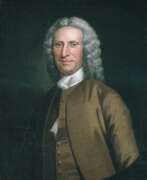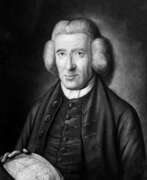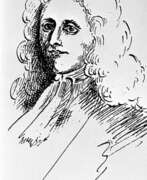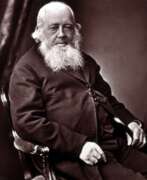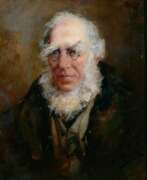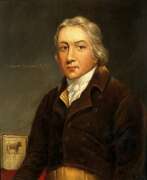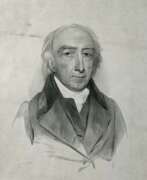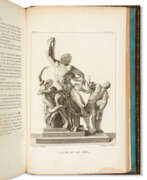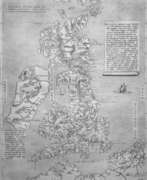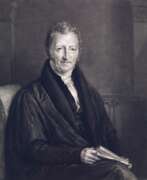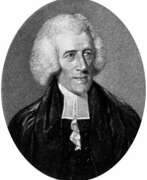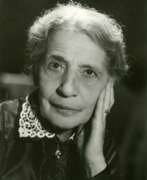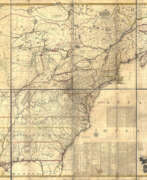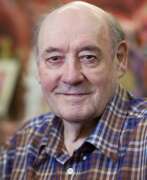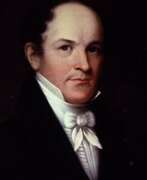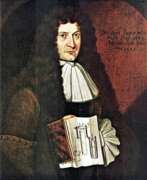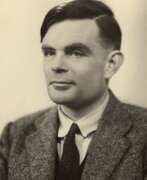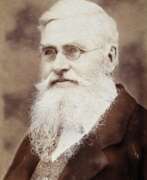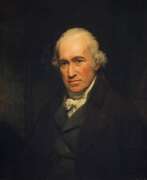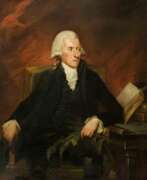Scientists United Kingdom
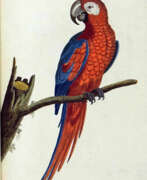

Eleazar Albin was a British naturalist and author of illustrated books on birds and insects.
Albin wrote and illustrated a number of books, including A Natural History of English Insects (1720), A Natural History of Birds (1731-38), and A Natural History of Spiders and Other Curious Insects (1736). His work was based on careful observation and artistic talent. Eleazar Albin has been called one of the "great illustrators of entomological books of the 18th century".
Some of the illustrations in these books are by Albin's daughter Elisabeth. Eleazar Albin himself proudly wrote of his drawings that they were all painted from life, with all the accuracy of a sketch, unlike the sketches of other scientists, who did them either from memory or from stories.
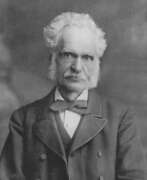

Henry Walter Bates was a British naturalist, biologist and traveler.
As a young man, Henry worked in a factory and attended the local mechanical institute, where he excelled in Greek, Latin, French, drawing and composition, later learning German and Portuguese. He also practiced classical music and was an avid entomologist.
In 1844, Bates met entomologist Alfred Russel Wallace, who a few years later invited him to go to the tropical jungle on a scientific expedition. In May 1848, they arrived in Para, Brazil, near the mouth of the Amazon River. Wallace returned to England four years later, but Bates remained there for a total of 11 years, exploring the entire Amazon Valley, where he collected some 14,712 species, mostly insects, of which 8,000 were previously unknown.
On his return to England in 1859, Bates began working on his vast collections and preparing a famous paper published in 1862 entitled Contributions to an Insect Fauna of the Amazon Valley. In 1864 Bates was appointed assistant secretary of the Royal Geographical Society (London), a position he held until his death. He wrote The Naturalist on the Amazon River (1863), as well as many works on entomology.
Bates's work in demonstrating the action of natural selection in animal mimicry (imitation of other living organisms or inanimate objects) provided strong support for Charles Darwin's theory of evolution. Much of Bates's insect collections are in the British Museum.
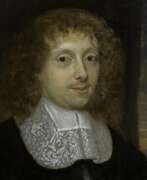

Edward Browne was a British physician, president of the College of Physicians, traveler, historian and writer.
Edward was the eldest son of the famous British scientist Sir Thomas Browne (1605-1682), received a Bachelor of Medicine degree from Cambridge later and a Doctor of Medicine degree from Oxford, and became a member of the Royal Society. In addition to medicine, his subjects of study included botany, literature, and theology. He lived in London and traveled throughout Europe visiting museums, churches, and libraries (Italy, France, the Netherlands, and Germany). In 1673 he published an account of his travels in Eastern Europe, notable for its scrupulous accuracy.
Edward Browne also published two other works: a historical treatise and biographies of Themistocles and Sertorius. He was physician to King Charles II of England and left many manuscript notes on medicine. The chronicle of his journey through Thessaly is a unique and valuable source of information about the region in the second half of the 17th century. He was admitted to the College of Physicians in 1675 and served as its president from 1704 to 1708.
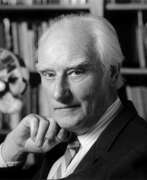

Francis Harry Compton Crick was a British molecular biologist, biophysicist and neuroscientist. He won the Nobel Prize in Physiology and Medicine in 1962.
During World War II he had to work on developments for the military, and in 1947 he turned to biology at the Strangeways Research Laboratory, University of Cambridge. In 1949 he moved to the University Medical Research Council at Cavendish Laboratories. Using X-ray diffraction studies of DNA by biophysicist Maurice Wilkins (1916-2004) and X-ray diffraction images taken by Rosalind Franklin, biophysicist James Watson and Crick were able to construct a molecular model consistent with the known physical and chemical properties of DNA.
This achievement became a cornerstone of genetics and was regarded as one of the most important discoveries of 20th century biology. In 1962, Francis Crick, along with James Watson and Maurice Wilkins, won the Nobel Prize in Physiology or Medicine for determining the molecular structure of deoxyribonucleic acid (DNA), the chemical ultimately responsible for the hereditary control of life functions.
From 1977 until the end of his life, Crick served as professor emeritus at the Salk Institute for Biological Studies in San Diego, California, where he conducted research on the neurological basis of consciousness. He also wrote several books. In 1991, Francis Crick received the Order of Merit.
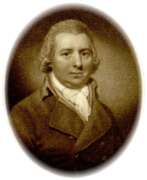

William Curtis was a British botanist and entomologist, editor of the oldest botanical publication in Great Britain.
Curtis became interested in natural history in his youth, and at the age of 25 had already published "Instructions for the Collection and Preservation of Insects", particularly butterflies. In 1779 he founded his own London botanical garden at Lambeth and published Flora Londinensis (1777-1798), a 6-volume work on urban nature.
In 1787 Curtis began publishing the later popular Botanical Magazine, which also featured hand-colored plates by artists. This magazine has changed its name several times over time, but is still continued by the Royal Botanic Gardens, Kew, as a publication for those interested in horticulture, ecology or botanical illustration. Interestingly, the magazine was entirely hand-colored until 1948.
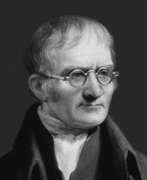

John Dalton was a British scientist, chemist and physicist, naturalist, and pioneer in the development of modern atomic theory.
In the 1800s, he was the first scientist to explain the behavior of atoms in terms of weight measurements. Some of the tenets of Dalton's atomic theory proved to be false, but most of the conclusions remain valid to this day.
Problems with his own eyesight led Dalton to research and describe the visual defect he himself suffered from in 1794 - color blindness, later named color blindness in his honor.
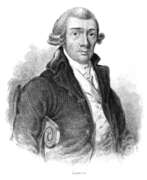

Dru Drury was a British entomologist and collector.
Dru Drury was an avid collector and his entomological collection totals 11,000 specimens. Drury corresponded extensively with entomologists from all over the world, from India to Jamaica to America, and bought any insects for 60 cents from officers of merchant ships arriving from afar. He even supplied travelers with a pamphlet of collecting instructions. It was through this work that Drury amassed most of his collection. From 1770 to 1787 he published three volumes on entomology, Illustrations of Natural History, with over 240 drawings of exotic insects.
Drury was president of the Society of Entomologists of London from 1780 to 1782, and a member of the Linnaean Society.
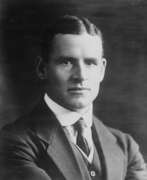

Admiral Edward Ratcliffe Garth Russell Evans, 1st Baron Mountevans was a Royal Navy officer and Antarctic explorer.
Evans was seconded from the Navy to the Discovery expedition to Antarctica in 1901-1904, when he served on the crew of the relief ship, and afterwards began planning his own Antarctic expedition. However, he suspended this plan when offered the post of second-in-command on Robert Falcon Scott's ill-fated Terra Nova expedition to the South Pole in 1910-1913, as captain of the expedition ship Terra Nova. He accompanied Scott to within 150 miles of the Pole, but was sent back in command of the last supporting party. On the return he became seriously ill with scurvy and only narrowly survived.


Michael Faraday was a British physicist and chemist, explorer and experimenter.
Faraday, because of his family's poverty, was unable to receive a formal education, but at the bookbinding shop in London where he worked, he read many books, including encyclopedias and textbooks on chemistry and physics. He persevered in self-education, attending hearings at the City Philosophical Society and later lectures by Sir Humphry Davy at the Royal Institution, who as a result took the able student on as an apprentice. In 1825 he replaced the seriously ill Davy in the management of the laboratory of the Royal Institution.
In 1833 Faraday was appointed to a research chair of chemistry created especially for him, where, among other achievements, the scientist liquefied various gases, including chlorine and carbon dioxide. His study of heating and lighting oils led to the discovery of benzene and other hydrocarbons, and he experimented extensively with various steel alloys and optical glasses. Faraday was an excellent experimentalist who presented his ideas in simple language. He is best known for his contributions to the understanding of electricity and electrochemistry. The concepts behind electromagnetic induction, diamagnetism, and electrolysis were some of his most important discoveries. His electromagnetic research formed the basis of the electromagnetic equations that James Clerk Maxwell developed in the 1850s and 1860s.
Between 1831 and 1855, Faraday read a series of 30 papers before the Royal Society, which were published in his three-volume Experimental Investigations in Electricity. His bibliography numbers some 500 printed articles. By 1844 he had been elected a member of some 70 scientific societies, including the St. Petersburg Academy of Sciences.
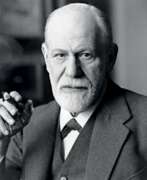

igmund Freud, born Sigismund Schlomo Freud, was an Austrian psychologist, psychiatrist and neurologist, the founder of psychoanalysis.
He graduated from the medical faculty of the University of Vienna, was engaged in self-education and numerous, cutting-edge for his time studies of the human psyche. The resulting psychoanalysis he created was both a theory of the human psyche, a therapy to alleviate its ills, and a tool for interpreting culture and society. Freud's psychoanalysis had a significant impact on psychology, medicine, sociology, anthropology, literature and art in the twentieth century.
Despite the sometimes harsh criticism of virtually all of his ideas and teachings, which continues almost a century after his death, Freud remains one of the most influential intellectual figures of our time.
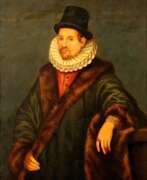

William Gilbert was a British physicist and medical scientist famous for pioneering the study of magnetic and electrical phenomena.
After receiving a medical degree, Gilbert settled in London and began his research. In his major work De Magnete, Magneticisque Corporibus, et de Magno Magnete Tellure (On Magnetic Stones and Magnetic Bodies and the Great Magnet of the Earth), published in 1600, the scientist describes in detail his studies of magnetic bodies and electric attraction.
After years of experimentation, he came to the conclusion that the compass arrow points north-south and downward because the Earth acts as a rod magnet. He was the first to use the terms electric attraction, electric force, and magnetic pole. Gilbert came to believe that the Earth rotates on its axis and that the fixed stars are not all the same distance from the Earth, and believed that the planets are held in their orbits by magnetism.
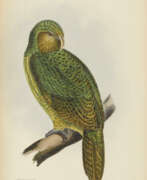

George Robert Gray was a British zoologist.
Gray practiced ornithology and scales, and for forty years headed the ornithology department of the British Museum, now the Natural History Museum, in London. Gray's major work on ornithology is entitled Genera of Birds (1844-1849), and is decorated with illustrations by David William Mitchell and Joseph Wolf. Gray also described many species of scales, and in 1833 became a founding member of the Royal Entomological Society of London.
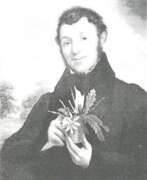

Adrian Hardy Haworth was a British scientist of entomology, botany and carcinology, and a Fellow of the Linnean Society.
Haworth made significant contributions to botany and entomology, describing many species of plants and insects. He summarized and published the results of his entomological collections in the extensive Lepidoptera Britannica (1803-1828), which was the first major monograph on the scales of Britain and one of the most authoritative works of the 19th century. Haworth was also a carcinologist and specialized in shrimps.
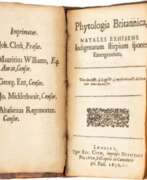

William Howe or How was a British botanist and physician.
He studied at St. John's College, Oxford, earning a bachelor's degree and then a master's degree in medicine. He served briefly in the King's army as a cavalry commander, and later returned to the medical profession and practiced in London.
In his Phytologia Britannica, natales exhibens Indigenarum stirpium sponte Emergentium ("Phytology Britannica"), published in London in 1650, William Howe combined Thomas Johnson's catalogs into a single alphabetical list, supplemented with additional plants from other sources. This was the first edition of the book to compile for the first time all the known plants of Britain with descriptions of their occurrence.
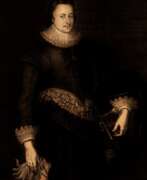

Martin Lister was a British naturalist and physician.
It could be argued that Lister founded two fields of natural history: arachnology (the study of spiders) and conchology (the study of the shells of organisms). He wrote more than 60 articles in the Philosophical Transactions of the Royal Society of London, published several volumes on natural history, speculated on the mysterious nature of fossils, and was successful as a physician.
Lister employed his artist daughters to illustrate his books on insects and molluscs - the names of Susanna and Anne appear on the title pages of the volumes. The Lister family published Historiæ Conchyliorum between 1685 and 1692.
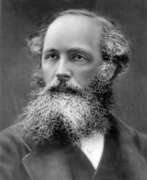

James Clerk Maxwell was a British physicist, mathematician and mechanic, and a Fellow of the Royal Society of London.
James Clerk Maxwell was one of the most influential scientists of the nineteenth century. His theoretical work on electromagnetism and light largely determined the direction physics would take in the early 20th century. Maxwell conducted research in a number of areas, but was particularly preoccupied with the nature of Saturn's rings. In 1860 he obtained a professorship at King's College, London, and it was his years there that were most fruitful. For his electromagnetic theory,
Maxwell is most often credited with fundamentally changing the course of physics. Maxwell saw electricity not just as another branch of physics, but "as an aid to the interpretation of nature." He showed the importance of electricity to physics as a whole by advancing "the important hypothesis that light and electricity are the same in their ultimate nature." This theory, one of the most important discoveries in nineteenth-century physics, was Maxwell's greatest achievement and laid the foundation for Einstein's theory of relativity.
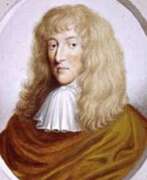

Christopher Merrett was a British physician and natural scientist.
Merrett was somewhat of a polymath and natural philosopher. His interests ranged from coinage and tin mining in Cornwall to glassblowing and butterfly taxonomy (his Pinax Rerum Naturalium Britannicarum of 1666 is now recognized as the earliest complete list of birds and butterflies in England).
However, he is much better known today as the first Englishman to record the existence of the sparkling wine phenomenon. It was Christopher Merrett in 1662 who first documented the existence of bubbles in an alcoholic beverage. He described the fundamental winemaking technique that was later called the "method of champanization" and perfected the production of stronger glass in the manufacture of wine fermentation bottles, which had previously exploded easily.
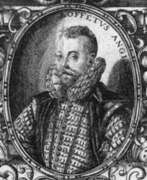

Thomas Moffet was a British naturalist-naturalist and physician.
After receiving his MD degree in 1580, Thomas Moffet studied the anatomy of the mulberry silkworm in Italy, then returned to England to study arthropods in general, especially spiders. He edited and expanded the work Insectorum sive Minimorum Animalium Theatrum ("Insect Theater"), an illustrated guide to the classification and life of insects.
Moffet was also an ardent supporter of the Paracelsian system of medicine.
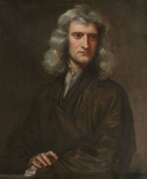

Isaac Newton was an English mathematician, physicist, astronomer, alchemist, theologian, and author (described in his time as a "natural philosopher"), widely recognised as one of the greatest mathematicians and physicists and among the most influential scientists of all time. He was a key figure in the philosophical revolution known as the Enlightenment. His book Philosophiæ Naturalis Principia Mathematica (Mathematical Principles of Natural Philosophy), first published in 1687, established classical mechanics. Newton also made seminal contributions to optics, and shares credit with German mathematician Gottfried Wilhelm Leibniz for developing infinitesimal calculus.
In the Principia, Newton formulated the laws of motion and universal gravitation that formed the dominant scientific viewpoint until it was superseded by the theory of relativity. Newton used his mathematical description of gravity to derive Kepler's laws of planetary motion, account for tides, the trajectories of comets, the precession of the equinoxes and other phenomena, eradicating doubt about the Solar System's heliocentricity. He demonstrated that the motion of objects on Earth and celestial bodies could be accounted for by the same principles. Newton's inference that the Earth is an oblate spheroid was later confirmed by the geodetic measurements of Maupertuis, La Condamine, and others, convincing most European scientists of the superiority of Newtonian mechanics over earlier systems.
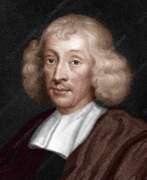

John Ray was a British clergyman, naturalist, botanist and zoologist, and a Fellow of the Royal Society of London.
He came from a poor family, but through his persistence in acquiring knowledge he achieved recognition as a scientist. Ray published important works on botany, zoology, and natural history. His classification of plants in Historia Plantarum was an important step toward modern taxonomy (the scientific study of naming, defining, and classifying groups of biological organisms based on common characteristics). John Ray was the first to provide a biological definition of the term "species."


John Ronald Reuel Tolkien was a British writer and poet, translator, philologist, and linguist.
Tolkien wrote many works in the genre of magical fiction. He became world famous for his fantasy books The Hobbit (1937) and The Lord of the Rings (1954-55).
"The Hobbit" was published in 1937 with drawings by the author and proved so popular that the publisher asked him to write a sequel. The result, 17 years later, was Tolkien's masterpiece, "The Lord of the Rings," which was voted the best book of the 20th century. By the beginning of the 21st century, more than 50 million copies had been sold in 30 languages. The film version of "The Lord of the Rings" by New Zealand director Peter Jackson, released in three parts in 2001-2003, broke world viewing records.
Tolkien has been called the "father" of modern high fantasy literature.
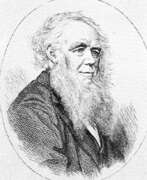

John Obadiah Westwood was a British entomologist and archaeologist, artist, and a Fellow of the Linnean Society.
John Westwood was the first Hope Professor at Oxford University, where he held the Chair of Invertebrate Zoology. He made a significant contribution to Australian entomology and wrote a large number of papers between 1835 and 1864.
Westwood was a good illustrator and published several illustrated works on insects and antiquities. He did not travel himself, but described insect species from around the world based on specimens, especially large, outlandish, and colorful ones obtained by naturalists and collectors in England. In 1855 the scientist was awarded the Royal Medal of the Royal Society of London.
